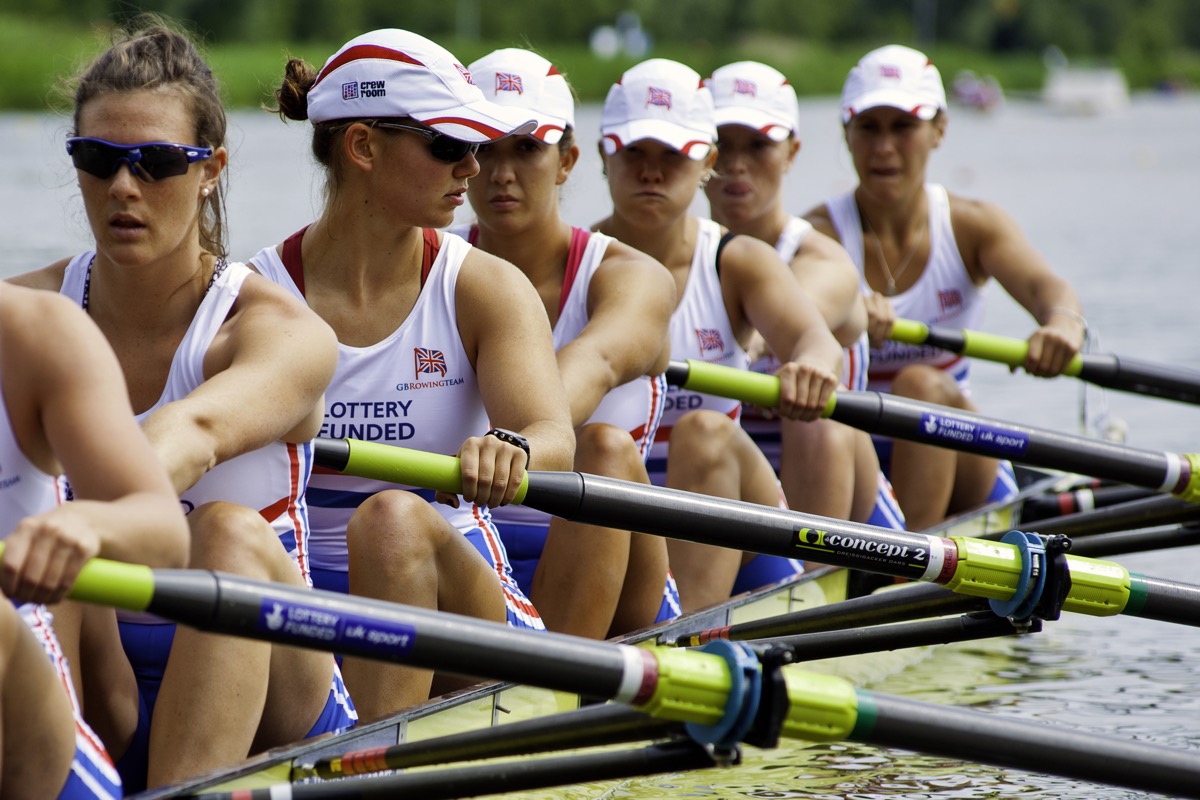Prehistoric Women Were Stronger than Elite Rowing Teams Today

When humans gave up hunting and gathering to settle down in villages and start farming, they didn't sign up for a life of leisure.
Prehistoric women who lived through those early days of agriculture in Central Europe performed demanding manual labor, according to a new analysis of their skeletons.
All that tilling, planting, harvesting and grinding gave these women buff upper arms. In fact, the study found that these women were even stronger than today's elite women's rowing teams. [Top 10 Mysteries of the First Humans]
Previously, most of the attention about physical changes humans experienced during the agricultural revolution had been focused on men.
Alison Macintosh, an anthropologist at the University of Cambridge in England, said broad trends in men's skeletons were relatively easy to interpret. She was involved in a previous study that showed that prehistoric men's leg bones got weaker with the rise of technological innovation, which made farming tasks less strenuous and allowed people to become more sedentary.
"It told this nice story about how male behavior changed through time," Macintosh said. But in women's skeletons, the trends were less obvious or more difficult to interpret.
One problem, Macintosh said, is that women appear to have less bone strength than men when the two sexes are directly compared.
Sign up for the Live Science daily newsletter now
Get the world’s most fascinating discoveries delivered straight to your inbox.
"You might interpret that as a difference in behavior between men and women, with men doing more physically demanding labor —that's quite commonly assumed, but it's not quite biologically correct," Macintosh told Live Science. Physical activity can alter human bones, but men's bones on average respond in a more extreme way to physical strain than women's do. "Even if they're doing similar types of activities, men might have stronger bones just because of the way the testosterone and estrogen act on the bones." [Men vs. Women: Our Key Physical Differences Explained]
A better way to understand the physical labor women were undertaking in the past would be to compare prehistoric women's bones with those of modern women, Macintosh said.
So she and her colleagues analyzed the bones of women's skeletons from cemeteries in Europe that date to the dawn of farming in the Neolithic era, as early as 5300 B.C., up through the Middle Ages, as late as A.D. 850.
The researchers also took CT scans of the arm and leg bones of living women, ranging from elite runners, rowers and soccer players at the University of Cambridge to students with less active lifestyles.
Macintosh and her colleagues found that the arm bones of Neolithic women were 30 percent stronger than those of typical Cambridge students and up to 16 percent stronger than those of Cambridge's elite rowers who were practicing twice a day.
Bronze Age women who lived 4,300 to 3,500 years ago had up to 13 percent stronger arm bones than the rowers—but their leg bones were12 percent weaker, perhaps suggesting that women became less mobile during this era.
The results were published Nov. 29 in the journal Science Advances.
It's not possible to directly attribute specific physical activities to the arm strength of prehistoric women observed in the study, Macintosh said. But she noted that some types of food processing can be especially hard on the arms. During the Neolithic era and the Bronze Age that followed, people manually crushed cereal grains using a type of grinding stone called a saddle quern. According to ethnographic observations of the few modern societies that still use this technology, women can spend 5 hours a day working at a saddle quern.
The study also found that there was considerable variation in the arm and leg strength of women in the past, which, Macintosh said, could be a reflection of "a huge range of different behaviors" and types of work that women engaged in.
Christopher Knüsel, an anthropologist at the University of Bordeaux in France who was not involved in the study, said it would be interesting to see if this variation among prehistoric groups of women could be explained by increased social inequality among these populations over time.
Knüsel also said that scientists used to believe that humans adopted farming because it was less physically demanding than the nomadic activities of hunter-gatherers. "The reverse is now considered to have been the case," he told Live Science in an email.
"Agricultural practices required greater work demands, and these women played an important role in such societies," Knüsel said. "It is now increasingly clear that in Europe, women, as well as men, felt this increased necessity for hard manual work."
For women, this likely meant processing grains and other materials in the domestic sphere, "for which there is ample archaeological evidence," Knüsel said.
Damiano Marchi, an anthropologist at the University of Pisa in Italy who was not involved in the study, said that until now, scientists did not have a modern set of data to use to interpret trends in women's bones in the past.
"The novelty of this work is about the focus on women," Marchi said. "We know much about the change in male robusticity throughout prehistory. However, understanding the variation of bone robusticity among women is of the greatest importance, given the central role of women in the expansion of agriculture around the world."
Original article on Live Science.










